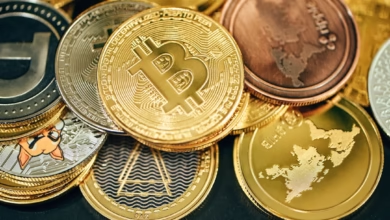Currency Currents: Navigating the Interplay of Interest Rates, Geopolitics, and Central Banks in Forex Trading

In the ever-evolving landscape of global finance, the interplay between interest rates and currency exchange rates stands as a pivotal factor influencing the dynamics of the foreign exchange (forex) market. As traders and investors seek to understand the complexities of currency movements, it becomes essential to analyze how variations in interest rates can create ripple effects across economies. Coupled with the unpredictable nature of geopolitical events, these fluctuations can lead to significant market volatility, affecting decisions on major currency pairs like the euro and the British pound.
In this article, we will delve into the multifaceted factors that shape forex trading, starting with the fundamental relationship between interest rates and currency dynamics. We will explore how central banks act as key players in determining currency values, the impact of inflation on trading strategies, and the growing prominence of digital currencies in traditional forex markets. Additionally, we will provide insights on effective trading strategies, including the carry trade, and highlight how economic indicators can be leveraged to forecast currency movements. Join us as we navigate the intricacies of forex trading and uncover the strategic approaches that can enhance your understanding and success in this dynamic field.
- 1. **Interest Rates and Their Ripple Effect: Understanding Currency Exchange Dynamics**
- 2. **Geopolitical Factors in Forex: Navigating Market Volatility**
- 3. **Central Banks and Currency Valuation: The Power Players in Forex Trading**
1. **Interest Rates and Their Ripple Effect: Understanding Currency Exchange Dynamics**
Interest rates play a pivotal role in determining currency exchange rates, as they influence capital flows and investor behavior. When a central bank raises interest rates, it typically attracts foreign capital seeking higher returns, which can lead to an appreciation of the domestic currency. Conversely, a decrease in interest rates may prompt capital flight, resulting in a depreciation of the currency. This dynamic is known as the interest rate differential, where the difference between the interest rates of two currencies affects their exchange rate.
The ripple effect of interest rate changes extends beyond immediate currency valuation. Higher interest rates can also signal a robust economy, fostering investor confidence and further attracting capital. This can lead to increased demand for the currency, reinforcing its strength. Additionally, changes in interest rates can affect inflation expectations. Typically, higher rates are associated with lower inflation, which further supports currency value.
Moreover, currency traders closely monitor central bank announcements and economic indicators that can influence interest rate policies. For instance, if a central bank indicates a potential hike in rates due to rising inflation, traders may preemptively buy the currency in anticipation of its appreciation. This speculative behavior can lead to significant fluctuations in currency values before the actual rate changes occur.
In summary, the interplay between interest rates and currency exchange rates is complex, involving not only direct effects but also broader economic signals that shape market perceptions and investor strategies. Understanding these dynamics is crucial for anyone looking to navigate the forex market effectively.
2. **Geopolitical Factors in Forex: Navigating Market Volatility**
Geopolitical factors play a crucial role in influencing forex markets, often introducing significant volatility that traders must navigate. Events such as elections, military conflicts, trade negotiations, and diplomatic relations can lead to rapid shifts in currency values as they impact investor sentiment and economic stability.
For instance, elections in major economies can create uncertainty, affecting currency valuations as traders speculate on potential policy changes. A change in government may bring new fiscal or monetary policies that could enhance or undermine economic growth, influencing currency strength. Similarly, geopolitical tensions, such as military conflicts or trade disputes, can create fear and uncertainty, leading investors to seek safe-haven currencies like the US dollar or Swiss franc, thereby driving up their value.
Trade negotiations, particularly between significant economic powers, can also have profound effects on forex markets. Positive developments in trade talks may strengthen currencies of the countries involved, while setbacks can lead to depreciation. Additionally, sanctions or tariffs imposed by one country on another can disrupt trade flows and impact currency values, as seen in various incidents involving the US and other nations.
Traders must stay informed about geopolitical developments and assess their potential impacts on currency pairs. This involves analyzing news reports, understanding the historical context of geopolitical events, and recognizing how market sentiment can shift in response to new information. By incorporating geopolitical analysis into their trading strategies, forex traders can better anticipate market reactions and make more informed decisions in a landscape characterized by uncertainty.
3. **Central Banks and Currency Valuation: The Power Players in Forex Trading**
Central banks play a pivotal role in shaping currency valuation and influencing the dynamics of forex trading. As the primary monetary authorities within their respective nations, central banks manage national currency supply and implement monetary policy, which directly affects interest rates, inflation, and economic stability.
One of the key functions of central banks is setting benchmark interest rates. When a central bank raises interest rates, it typically strengthens the national currency, as higher rates offer better returns on investments denominated in that currency. Conversely, lowering interest rates can weaken the currency, as returns diminish, prompting investors to seek better yields elsewhere. This relationship between interest rates and currency value is a fundamental concept in forex trading, guiding traders in their decisions.
Additionally, central banks engage in open market operations, buying or selling government bonds to regulate money supply. These actions can lead to significant shifts in currency value. For example, quantitative easing, a policy where central banks purchase large amounts of financial assets to inject liquidity into the economy, often results in currency depreciation. Traders closely monitor these actions and future guidance from central banks, such as forward guidance on interest rate changes, to anticipate market movements.
Central banks also respond to geopolitical events and economic crises, using tools such as currency interventions and policy adjustments to stabilize their economies. For instance, during times of economic uncertainty or global instability, a central bank might intervene directly in the forex market to support its currency, which can lead to immediate and pronounced effects on exchange rates.
Overall, the influence of central banks on currency valuation cannot be overstated. Their policy decisions and interventions provide critical insights for forex traders, who must analyze and anticipate these movements to effectively navigate the complexities of the forex market. Understanding the motivations and potential actions of central banks is essential for developing sound trading strategies and making informed investment decisions.
In conclusion, the intricate relationship between interest rates, geopolitical events, and central bank policies forms the backbone of currency exchange rate dynamics. As we have explored, interest rates not only influence the value of currencies but also create ripple effects that impact global trade and investment flows. Geopolitical factors further complicate these dynamics, introducing volatility that traders must navigate with care.
Central banks emerge as critical players, wielding significant influence over currency valuation through their monetary policies and interest rate decisions. Additionally, inflation continues to shape forex trading strategies, prompting traders to adapt to changing economic conditions. The rise of digital currencies adds another layer of complexity, challenging traditional forex markets and encouraging a reevaluation of established trading strategies.
Ultimately, successful forex trading hinges on a comprehensive understanding of these interrelated factors, coupled with the ability to analyze economic indicators effectively. By remaining attuned to interest rate movements, geopolitical developments, and central bank actions, traders can better position themselves to capitalize on currency fluctuations while managing the inherent risks of the forex market. As the landscape continues to evolve, staying informed and adaptable will be key to navigating the future of currency trading.





